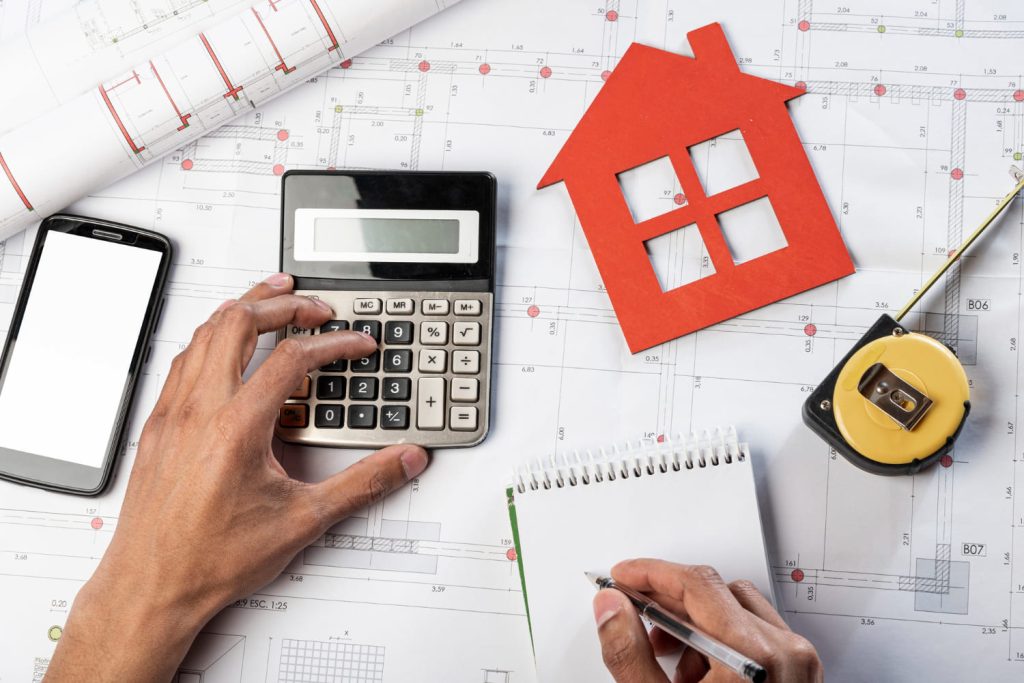Buying a property you’ve always dreamed about is no less than a major milestone. It may be one of the biggest financial decisions you’ve ever made. Amidst the merry of owning a new home or property, just paying the seller doesn’t mark the end of your responsibilities. TDS on purchase of property is something every buyer has to deal with. In other words, there are several tax rules you should know when purchasing a property in India.
Though a small step, TDS on property purchase is crucial to ensure your transaction complies with India’s tax laws. Missing it could lead to penalties. Many buyers may not know what it means, when it applies and how to pay it. This article will simplify it for you! Read on to find out everything about TDS when you buy properties in India. Whether you’re a first-time buyer or a seasoned investor, understanding TDS can help avoid unwanted hassle.

In India, TDS (Tax Deducted at Source) is a system where tax is deducted when you receive money. It is an indirect tax imposed on the income you gain through various business transactions or financial products. This tax is levied right at the source of income rather than waiting until year-end. In other words, a part of the money is deducted as tax before it reaches the person who earned it. For instance:
TDS is usually a percentage of the income. It helps the government collect taxes in advance, reducing the chance of tax evasion.
In real estate, TDS applies to income from renting, selling or purchasing a property. When buying a property, the buyer has to deduct a small portion of the payment as TDS before paying the seller. They then deposit the deducted amount with the government on behalf of the seller. Purchase of property TDS ensures that the government receives tax from the property transaction and that both buyer and seller comply with the income tax laws.
TDS is applicable when the amount of a property transaction exceeds the set limits. You may wonder, “Is TDS on sale of property different from TDS on purchase?” Technically, they are just two ways of saying the same thing:
TDS on purchase of land or buildings is not levied the same for every real estate transaction. The Income Tax Act 1961 has laid down clear conditions for when levying TDS on land purchase or building sale is practised. TDS applies:
However, there is no need to deduct TDS on purchase of property or plot if:
According to Section 194-IA of the Income Tax Act 1961, TDS on property or land purchase is calculated as 1% of the total sale value if the amount is ₹50 lakhs or above. TDS should be calculated for the entire amount and not just on the amount exceeding ₹50 lakhs.
For instance, if you purchase a house for ₹90 lakhs, TDS should be deducted at 1% for ₹90 lakhs, not just for ₹40 lakhs (90 lakhs – 50 lakhs). In that case, TDS on home purchase = 1% of 90,00,000 = ₹90,000. You’ll deduct this TDS amount before paying the seller and pay the TDS to the government as per the stipulated procedure and timeline. The seller can claim it while filing their ITR (income tax return).
Note: TDS calculation does not include other charges like stamp duty, registration fees or GST. Besides, you should verify the seller’s PAN details while filing. Incorrect information or non-submission of PAN can lead to penalties. In that case, TDS will be deducted at higher rates— 20% or the rate mentioned in the Act.

Paying TDS on purchase of property is a must to have your real estate transaction comply with the Income Tax Act. With a few simple steps offline and online, you can ensure your transaction is proper in official records, avoiding any penalties or notices later. It protects the interests of the seller too, as they receive proper tax credit that would reflect in their ITR.
Thus, paying TDS on flat purchase or non-agricultural plot deals helps avoid unwanted confusion and conflicts related to the transaction in the future. Below is a breakdown of the 3 simple yet significant steps every property buyer or seller should be aware of: TDS deduction, deposit and obtaining the TDS certificate.
The first step is TDS deduction on purchase of property. This power lies with the buyer and not the seller. Deducting TDS on house purchase or non-farm land sales should happen before the seller receives the full payment.
After deducting TDS on house property or non-farm land, the buyer should deposit the tax money with the government. This can be easily done online through the central government’s Income Tax e-filing portal using the Form or Challan 26QB.
Note: First-timer users are required to register on TRACES (an official portal for TDS services) using their PAN and challan information to access Form 16B as described in the final step.
Usually, within a week after paying TDS using the Challan 26QB, the payment will reflect in Form 26AS. It confirms the government’s receipt of the TDS amount. As a final step, the buyer has to issue a TDS certificate (Form 16B) to the seller. This requires logging into the TRACES portal. The buyer must have registered on TRACES using their PAN and the challan details.
Prior awareness of these 3 steps in TDS payment helps avoid common mistakes—incorrect filling, late remittance or failure to generate Form 16B, mitigating penalties and conflicts.
Further Reading: What Is Property Tax Assessment and Why It Matters

Form 26QB is an online challan-cum-statement that buyers use to deposit TDS on purchase of property with the government under section 194-IA of the Income Tax Act 1961. Filing it is mandatory when you buy a non-agricultural plot or a real estate property worth ₹50 lakhs or more.
You can fill Form 26QB directly via the Income Tax department’s online portal. You don’t need a TAN (Tax Deduction Account Number) to fill it out. Besides, it does not require you to register on the TRACES portal. Here are some simple steps:
Note: It is important to submit Form 26QB within 30 days from the end of the month for which the TDS was deducted.
Imagine Varun buys a house worth ₹65 lakhs from his friend Shekhar, and the transaction was initiated on 15th December 2024.
For this property deal, filling Form 26QB and payment of the TDS for house purchase should be completed by Varun on or before 30th January 2025. Failing to do so would attract a late fee of ₹200 per day.
The TDS process is simple and digital; it aims to reduce delays and paperwork for both buyers and sellers. The rules for TDS on residential property and other types of properties are largely the same. However, buyers and sellers should stay updated with the latest changes announced by the Income Tax Department. Here are some notes:
Though the basic TDS rules are straightforward, some situations need special attention. Here are some special cases in TDS on purchase of property that every buyer should know.
If the seller is a non-resident Indian (NRI), TDS is deducted at a higher rate, 20% or more, based on the type of capital gains. In this case, the buyer must obtain a TAN and may have to consult a tax expert for proper guidance.
TDS applies to both under-construction and fully-constructed properties worth ₹50 lakhs or more. 1% TDS must be deducted on every lump-sum or instalment paid to the builder. This rule under Section 194-IA of the Income Tax Act applies to property bought directly from a builder.
In real estate transactions with joint buyers or joint sellers, TDS compliance must be done for each party. All PAN details must be entered separately in Form 26QB, which means multiple forms may have to be filled out.
If you are buying a property through a Power of Attorney (PoA) holder, the TDS should be deducted in the original seller’s name and not the PoA holder’s. The PoA holder serves as a representative.
Sometimes, it may happen that you acquire a property through a bank auction or a court-ordered sale. You have to deduct TDS and deposit it with the government if the sale value is ₹50 lakhs or more. In such cases, TDS is paid to the bank or court, and the buyer is responsible for paying it.
If you are buying a flat or house worth ₹50 lakhs or above directly from a builder or developer, TDS is deducted on every lump-sum or instalment paid. The builder will receive the payment only after the buyer deducts the TDS for flat purchase and deposits it with the government.
If you are paying the property price in instalments, TDS must be deducted on every instalment. This ensures compliance all along the transaction and avoids penalties for late deduction.

Timely TDS deduction, deposit, and filing are key to safeguarding the interests of both buyer and seller. Failing to follow the TDS rules can have serious consequences. Here are some implications buyers should watch out for if TDS is not deducted or deposited on time:
The knowledge of TDS on purchase of property helps keep your real estate transactions smooth and legally compliant. TDS applies to all residential or commercial properties and non-agricultural plots worth ₹50 lakh or above. It is calculated as 1% of the total sale value. While the process may seem complex, TDS payment is simple and easy for a buyer to do online through the portal. It ensures transparency and protects both parties in a real estate deal.
If you’re planning to invest in a property, TDS compliance can let you enjoy the fruit of your investment with peace of mind. Looking for a strategic partner for expert guidance and premium living options? Who better than Confident Group! With a remarkable footprint and excellence in real estate solutions for decades, we’re here to make your real estate ambitions come true! Reach out to us; let’s turn your dream haven into a reality!

Housing options in India are plentiful and cater to a diverse range of preferences and lifestyles. Land is premium in cities and urban areas, which explains the rising demand for verticalisa...

Buying property involves many technical terms, and one of the most confusing yet critical among them is UDS full form for most first-time homebuyers. UDS stands for Undevided Share. The UDS ...
Comments